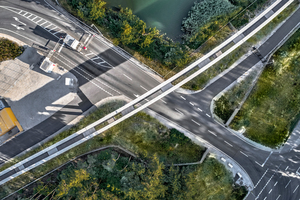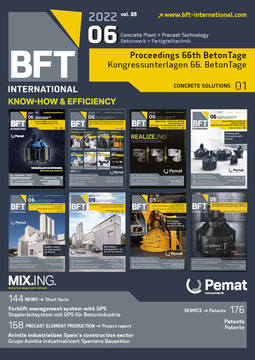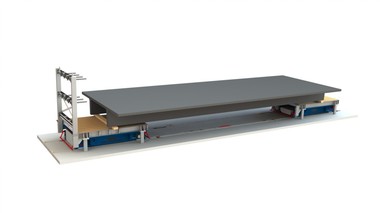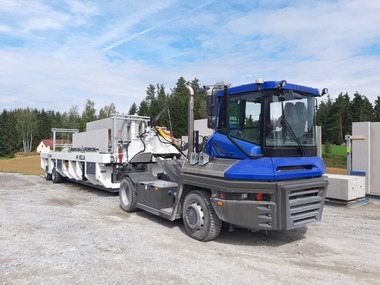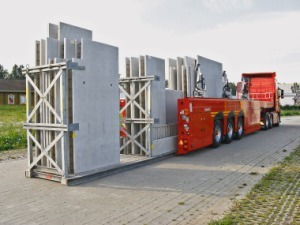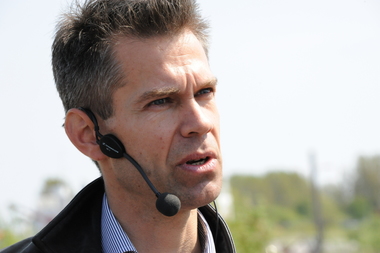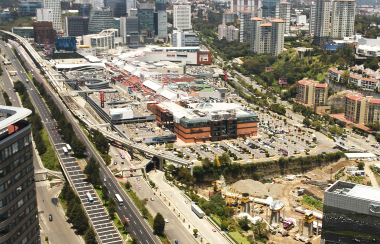Rethinking public transport – The TSB maglev train for the urban space
Sustainable mobility und logistics are among the most important future challenges. Currently electric mobility is in the focus with many innovative vehicle solutions. However, transport systems of the future do not only need sustainable vehicles – they also require an appropriate state-of-the-art, sustainable infrastructure.
While private transport by itself consumes a large area per carried
passenger – independently of the type of drive or autonomous capabilities – track-guided systems are much more space-efficient. The consumed space is reduced even further if they are efficiently shifted to an elevated level.
To reach this goal, the load-bearing structures should be as slender as possible, which can be achieved particularly effectively by ensuring homogeneous load transfer patterns free of load peaks. This is perfectly possible with magnetic levitation technology along the whole vehicle length and thus along the entire support structure. Installation of a conventional track grid with gravel ballast is no longer necessary since the loads are transferred directly into the structure. This approach results in very slender track girders limited to 1.2 m in height and a span of 36 m.
For efficient construction, precast concrete elements are the perfect choice. For common distances in urban transportation, production in centrally located factories is much more efficient than setting up temporary local facilities in each case. To optimize transport, single elements of up to 12 m in length are made for easy transport, such as with standard ISO containers. On-site, only these elements need to be assembled to form the girders that can be placed directly on columns, ready for use.
Taking the Transport System Bögl (TSB) as an example, this paper demonstrates how the infrastructure of tomorrow’s transport systems contributes to space and resource savings and exceedingly short installation times already today.

